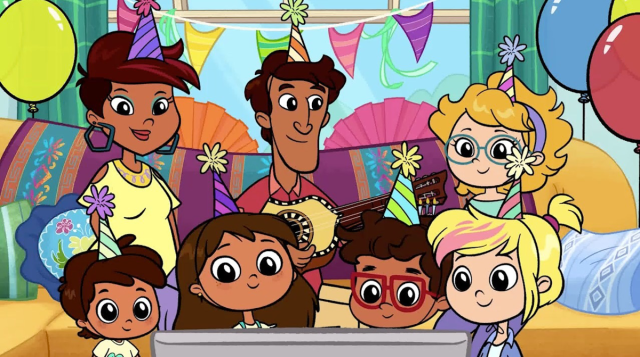‘Rosie’s Rules’ normalizes what it can look like to live in and be part of a multicultural household
Rosie Fuentes is your typical 5-year-old girl: curious about the world, full of energy, kind and compassionate, and just the right amount of silly to brighten anyone’s day. She’s also the star of the newest animated PBS Kids show, Rosie’s Rules. The fun-loving, Mexican-American Rosie is the latest addition to the network’s efforts in bringing about diverse representation for young Latinx kids everywhere—and I’m pretty sure your kids are going to love it.
In ROSIE'S RULES, kids will learn lessons about how a community works and develop their awareness of themselves as individuals and as part of a broader society.
— PBS Western Reserve (@PBS_WR) September 26, 2022
Tune in next Monday at 10 a.m. or begin streaming for free on the PBS KIDS Video App. pic.twitter.com/7fBaSulTxJ
The show centers around Rosie and her bilingual, multicultural, blended family (including Rosie’s older half-sister Crystal, her cousin Javi, and her cat Gatita) as she learns to navigate the world. While Rosie attempts to find out the answer to a new question each time, she also shares her own “rules” about life (like how you should only spin very slowly if you’re wearing a big, poofy chef’s hat so it won’t fall down). She also shows how she can regulate her emotions in a move called “the flop,” wherein she lays down flat on the ground, takes some deep breaths, and then wiggles around until she feels better—a great example for young kiddos.
In one episode, Rosie finds out what it means to be a dog sitter and discovers it requires a lot more work and patience than expected. In another, Rosie wonders how she can possibly celebrate her Abuela’s birthday when she lives far away in Mexico City. She ends up figuring out a way to mail her a “party” in a box, so they can each celebrate on their end of a video call. It feels very familiar not only because so many of us just spent the past two years having “remote” celebrations, but also realistic for many Latinx and first-generation kids who still have loved ones in other countries (loved ones who can’t always travel with ease the way so many U.S. citizens can).
Related: 18 Latinx Trailblazers Your Kids Should Know
Speaking of which, Rosie’s Rules does an excellent job of making Latinx families feel seen. Weaving in bits of Spanish words and sayings into daily conversations (“ciao, bacalao!”) helps teach Latin and non-Latin children alike some of the language and culture. Then there’s the Mexican decor around the Fuentes home: the papel picado they hang up on the front porch for a celebration, the colorful Mexican textiles on the couch, even Iggy’s axolotl stuffy—the axolotl has been an important animal for Mexican culture for centuries.
With these subtle but simple decisions, the show normalizes what it can look like to live in and be part of a multicultural household. Given that Latinxs are the largest and fastest-growing minority population in the nation (with Latinx children making up over a quarter of the child population in the U.S.), it’s important to continue to create positive, diverse media like Rosie’s Rules so that Latinx children can see their own stories reflected on screen.
Check out the new ‘Rosie’s Rules’ premiering on October 3rd on PBS Kids.











